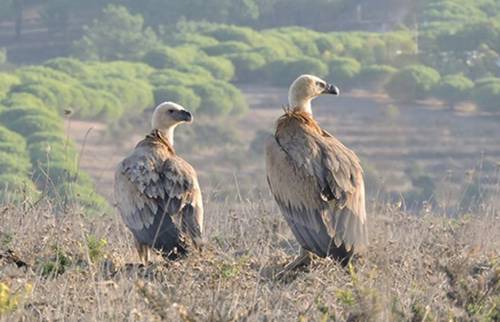La Jornada – Scientists suggest measures to reduce risks to birds from wind turbines

Madrid. A new study identifies regions in Europe and North Africa where building wind turbines or power lines is likely to increase bird mortality risks.
The research, led by the University of East Anglia (UEA), used GPS location data from 65 bird-tracking studies to understand where they often fly at risk altitude, defined as 10-60 meters above ground for power lines and 15-135 meters for wind turbines. This allowed the team to identify areas where these birds would be most sensitive to developing power lines or wind turbines on the ground.
The resulting vulnerability maps reveal that collision hotspots are particularly concentrated along important migration routes, along coastal lines, and near breeding sites. These include the western Mediterranean coast of France, southern Spain, and the Moroccan coast, such as around the Strait of Gibraltar, eastern Romania, the Sinai Peninsula, and Germany’s Baltic coast.
Data collected by GPS were related to 1,454 birds from 27 species, most of which were large fliers such as the white stork.
Exposure to hazards varies by species, with Eurasian spoonbills, European eagle owls, rock swans, Iberian imperial eagles, and white storks among those who frequently fly at altitudes where they are at risk of collision.
The study published in Journal of Applied Ecology An international team of researchers from 15 countries and organizations participated in it.
The authors say that the development of wind turbines and new power transmission lines should be minimized in these highly sensitive areas, and any development that occurs is likely to be accompanied by measures to reduce risks to birds.
This is the first time GPS tracking data of several types has been used in this way, explained Jethro Gauld, of the UEA’s School of Environmental Sciences and lead author of the study.
“We know from previous research that there are far more suitable sites to build wind turbines than we need to meet our clean energy goals through 2050,” Gold said in a statement.
Risk assessment
“If we can do a better job of assessing biodiversity risks, such as bird strike risks, early in the planning process, we can help reduce the impact of these developments on wildlife while still meeting our climate goals. Our results will help make that happen.”
The researchers combined sensitivity data with the locations of wind farms and onshore power lines to identify hot spots where these birds are at risk, for example, areas that already have a high collision risk due to the presence of wind turbines or power lines.
“These measures may include marking these lines to make them more visible and implementing systems that allow wind turbines to be turned off during periods of high bird traffic.”

“Award-winning zombie scholar. Music practitioner. Food expert. Troublemaker.”


/cloudfront-eu-central-1.images.arcpublishing.com/prisa/AHVYMMDSTZDTDBFNZ3LMFUOKNE.jpg)








